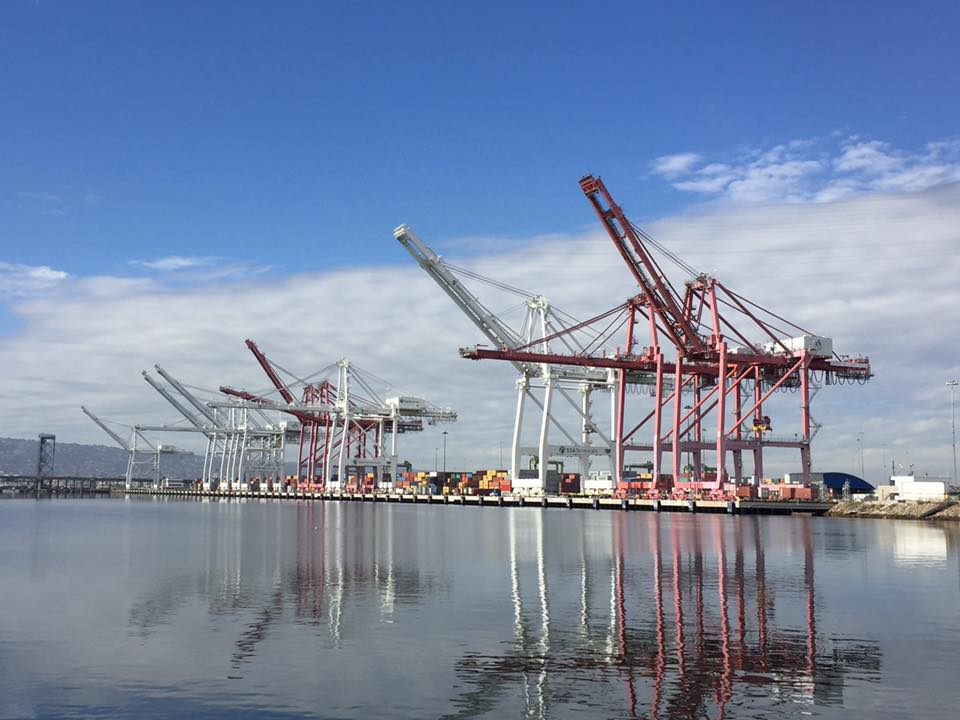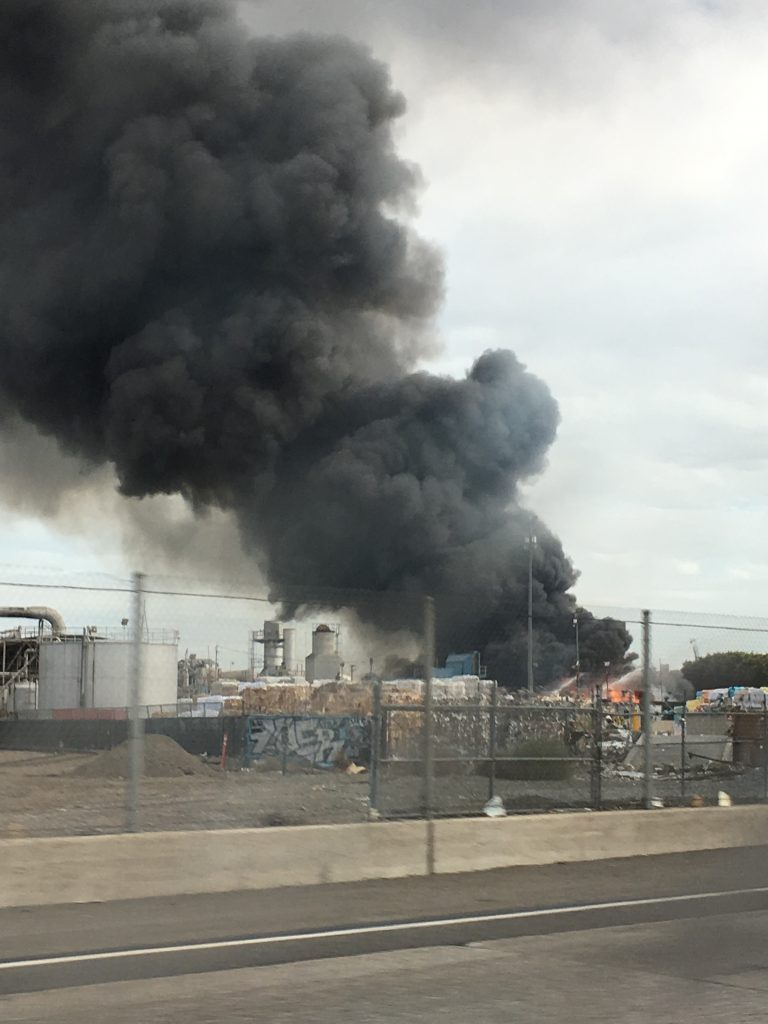
by Samantha Miyamoto
As an MPH intern at the Community Outreach and Education Program (COEP) in the USC Environmental Health Division, I jumped at the school-sponsored opportunity to tour the Port of Long Beach. On October 28th, our group of USC students, interns, faculty, staff, and members of East Yard Communities for Environmental Justice's Marina Pando Social Justice Research Collaborative boarded the Pacific Spirit and seated ourselves on the boat’s upper level. The day was clear, the waters calm, and at 11 AM, our instructive experience was underway.
Established in 1911, the 3,200-acre Port of Long Beach is the gateway to the goods movement, which is responsible for the transportation of over 1.15 billion tons of cargo, 1.4 million jobs, and $140 billion generated by “port-related trade”.1,2,3 As the boat hugged the shore heading towards the berthing areas, I was struck by how small I felt. It’s one thing to hear port statistics, and it’s another to see in person one single ship and its cargo towering into the skyline. It was a humbling experience indeed.
[pjc_slideshow slide_type="port-of-long-beach"]
Ships represent one cog in the goods movement machine. When factoring in the trucks, trains, cranes, tractors, railyards, highways, freeways, airports, and warehouses used, the impact of the goods movement on the local economy and environment is nothing short of colossal.
Almost all of the port related transportation is fueled by diesel. Diesel combustion results in particulate and greenhouse gas emissions released to the air; the carcinogenic health risks of diesel combustion have been well documented. During the tour, the guide assured us that the Port of Long Beach was working towards a “zero emissions” goal. At the moment, her admission quelled any fears I had about the port’s environmental health impacts. Even now, I marvel at my naivete.
Following the port tour, our group had a discussion with Giselle Fong, the Chair for Building Healthy Communities Long Beach and Environmental Health Work Group and the Executive Director of EndOil and Communities for Clean Ports. Ms. Fong described in greater deal how communities along the local I-710 corridor experience disproportionate amounts of air pollution due to the goods movement. With an average of 25,000 trucks passing through I-710 and other highways per day in 20081, how could these communities not experience elevated pollution?
In this conversation, Ms. Fong highlighted how necessary a community’s voice is in order to protect its environment and health. She fully supported advocacy efforts, which have been instrumental in inspiring the port juggernaut to reduce emissions. However, she also recognized how nuanced this environmental justice issue is; the port affords multiple employment opportunities to nearby communities, a major factor to consider. Ending the conversation on a positive note for the future, Ms. Fong provided great inspiration.
On reflection, even though the port guide did not mention was that it was community advocacy that helped spur the port movement toward a “zero emissions” goal, I realize she spoke on behalf of the port’s best efforts. As did Ms. Fong on behalf of environmental justice coalitions. Being exposed to the economic and environmental justice sides of the discussion was a rewarding learning experience.
The day’s outing demonstrated to me the need for balance between commerce and community. Advocacy as well as urban planning solutions, preventive measures, lobbying, and technological innovation are necessary solutions for reconciling a community’s health with economic growth. At the risk of sounding jaded, I’d describe the collective efforts as common sense. I guess I can say I’m biased.

Returning from the port on the I-710, we drove past an industrial fire in a recycling facility in Commerce. Charcoal-black smoke billowed with a vengeance up to the overcast sky. Sinister though it was, the image provided yet another reason to continue pressing for pollution prevention and environmental justice.
For more information about the health effects of diesel, check out our infographic with associated references: